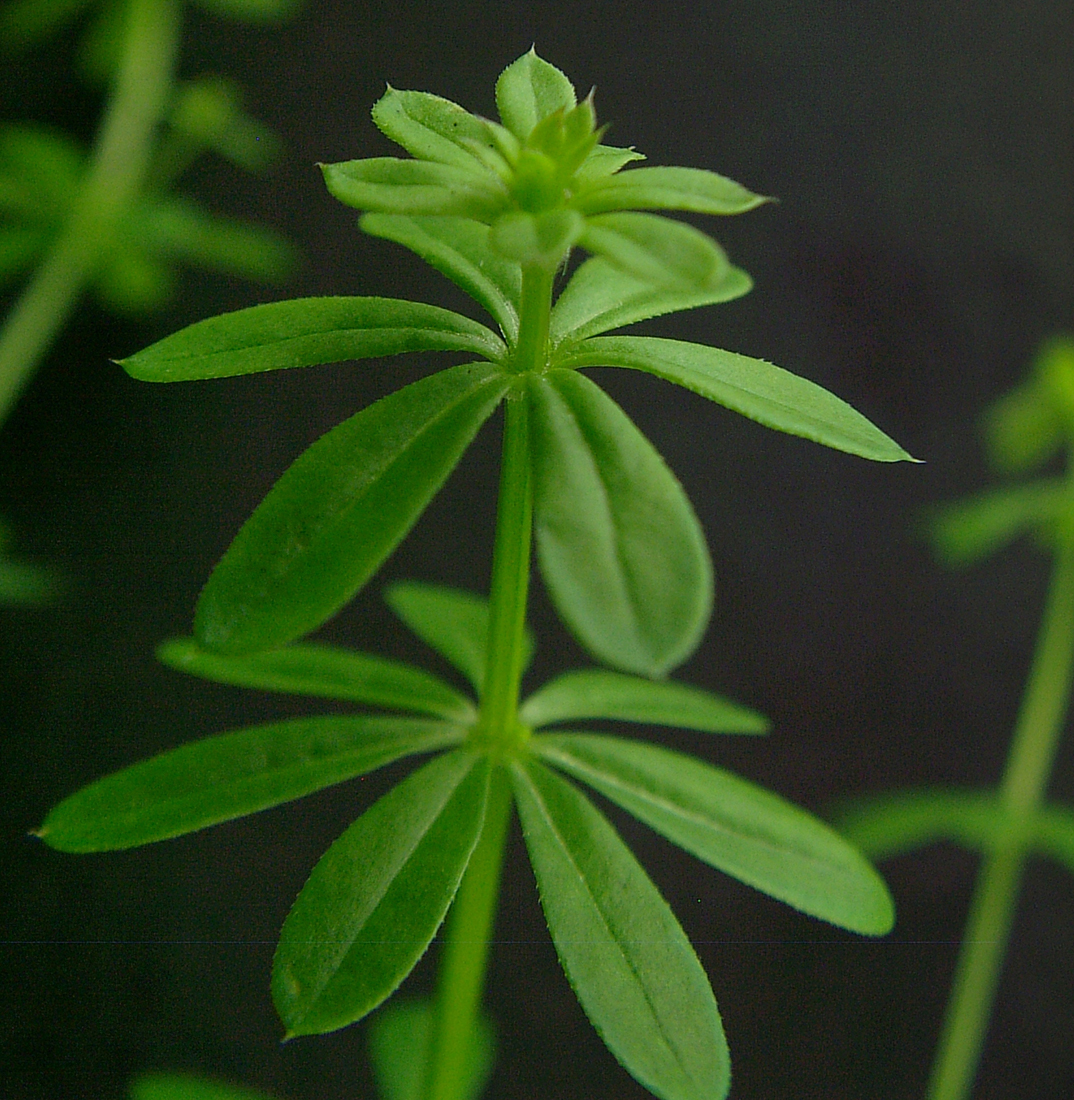Smooth Bedstraw
- Madder (Rubiaceae family):
- Galium mollugo L.
- EPPO code:
- GALMO
- Other names:
- Cleaver, baby’s breath, white bedstraw, wild madder
Species information
- Lifecycle:
- Perennial.
- Propagation:
- Smooth bedstraw reproduces by seed and by spreading underground rhizomes.
- Emergence:
- Germination occurs both in the fall and in the spring, but most seedlings emerge in the spring.
- Habitat:
- Smooth bedstraw prefers moist and cool temperate habitats. It is most commonly found invading pastures and forages crops. While it is distributed across the province, smooth bedstraw is mostly found in Northeastern Ontario and in the Golden Horseshoe region.
- Competitiveness:
- Smooth bedstraw strongly competes with forage and pasture crops.
Identification clues
Seedling
- Cotyledons:
- Oblong, with a distinct stalk and an indentation at the apex.
Leaves
- First leaves:
- Produced in whorls with three or more leaf blades.
- Mature leaves:
- Mature leaves appear in whorls of 6–8 narrow leaf blades, each with a pointed tip. Leaves at this stage are smooth to the touch. The whorled leaves are much smaller than those of cleavers.
Mature plant
- Stem:
- Slender, smooth and soft, smooth bedstraw’s stem is erect at first, but becomes much more branched as the plant grows, often smothering out surrounding vegetation.
- Flowers:
- The flowers are small and contain four white petals. They sit on top of a small, round ovary, which develops into fruit that produces two seeds.
- Seeds:
- Seeds are small, about 1–1.5 mm in length, roundish to kidney shaped and grayish- brown in colour.
- Roots:
- Fibrous root system attached to spreading underground rhizomes.
Often mistaken for
I know it's not Cleavers because smooth bedstraw is hairless and smooth to the touch whereas cleavers are coarse textured and will stick to clothing.





Updated: January 13, 2023
Published: January 13, 2023